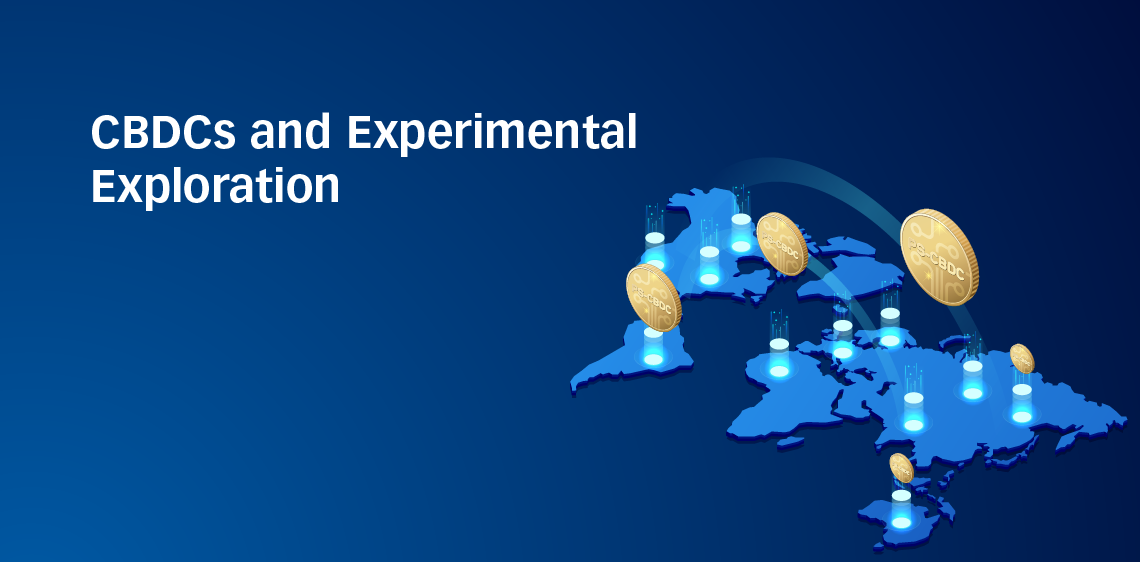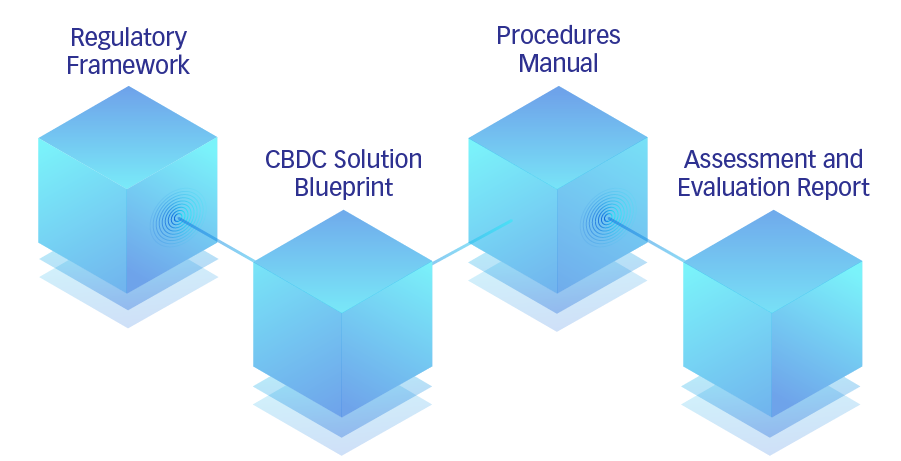
August 5, 2021
CBDCs and Experimental Exploration

More than 60 countries around the world are considering launching their own national digital currency, more formally known as Central Bank Digital Currency (CBDC) or GovCoin, with almost 90% of those countries’ central banks already embarking on exploratory projects to study the potential of CBDC.
CBDC is a prospective digital substitute or alternative to physical banknotes and coins. The digital currency would be issued by the central bank only if it can provide the inherent features of money as a legal tender, medium of exchange and store of value.
Initially, CBDCs came about as a response to the rise of volatile cryptocurrencies that are not issued by central banks, such as Bitcoin, Dogecoin and Ethereum among others, which today continue to present negative impacts on economies worldwide. The emergence of these cryptocurrencies has in fact been extremely helpful in shedding light on the potential for central bank digital currencies where issuing highly secure digital money under the surveillance of central banks would open the way for enhanced financial inclusion and control over currency in circulation (M0).
Today, CBDC is anticipated to be the most important financial innovation since the invention of banknotes. However, with this new technology comes new obscurities, including its effects on interest rates, financial stability and security, bank funding and liquidity and more economical, legislative, regulatory and compliance requirements that need careful evaluation.
Experimental Exploration
Like any other disruptive innovation, when a newly emerging phenomenon is addressed, the recommended approach is an experimental exploration. Central banks worldwide are now engaging in this process, as experts have yet to determine the specific steps required to successfully establish a CBDC.
An experimental exploration into CBDC provides regulators with the opportunity to examine three crucial considerations:
1. Use Case Scenarios
An experimental exploration provides the opportunity for central banks to assess the current monetary situation in the country by studying how cash is being used and the adoption levels of e-money, as well as the technologies in place and how they can contribute to presenting a CBDC.
It also provides the capability to scrutinize ‘as-is’ situations for every business use case scenario, as well as build and anticipate ‘to-be’ situations for CBDC use case scenarios. These include:
- Token-based versus account-based implementation approaches
- Issuance, pledging and redemption
- Interbank settlement
- Cash-in/out
- Intraday liquidity management and sweep accounts
- Wallet-to-wallet transfers
2. Gradual Implementation Approach
CBDC use case scenarios cannot be implemented all at once. They should be gradually presented to the public starting with the least risky points, such as interbank settlement and intraday liquidity.
Gradually extending and expanding CBDC is crucial in assessing and resolving issues when they arise in an agile way so that the solutions are focused on the case at hand.
Once a use case is applied to a limited partial group of the business scenario domain, it can be expanded to additional segments of the same domain, for the same use case. And only when a business use case is fully implemented or at least expanded to over 80% of the domain population, the platform may be extended to incorporate another use case and so on.
3. Coexistence of Cash and CBDC
With a gradual implementation approach, it is expected that cash and CBDC will continue to coexist for a considerable period until the adaptability of the public to CBDC determines when it will become the dominant form of money in the country.
This impacts the way central banks can manage and budget for a national CBDC each year. While cash management budgets will be reduced along the way, CBDC domain expansion budgets may need to increase according to each business scenario, or the addition of new ones. All of this becomes clearer with an experimental exploration.
What Can Central Banks Expect from Experimental Exploration?
The formal outcomes of an experimental exploration are four major deliverables that include a regulatory framework, CBDC solution blueprint, procedures manual and an assessment and evaluation report.

Regulatory Framework
Whether an institution is enhancing and automating a business process or introducing an entirely new instrument such as CBDC, a proper regulatory framework that is based on a solid legislative framework supported by a jurisdiction’s laws, acts and decrees is essential.
One of the main targets of the exploration is to be able to build the legal and regulatory frameworks that assist in properly introducing CBDC as a new monetary instrument that may replace banknotes and coins.
A primary expectation of this project's scope is to curate the proper drafts of legal and regulatory frameworks that would assist in successfully introducing CBDC into a country in the future.
CBDC Solution Blueprint
As the target is to examine and explore the potential of CBDC technologies, building a high-level blueprint architecture of a formally accepted CBDC solution within the country is one of the major outcomes of experimental exploration.
This blueprint can be used at a later stage to build the actual CBDC solution and direct efforts towards an agile expandable set of services that CBDC may serve.
Procedures Manual
Like the regulatory framework, a procedures manual that governs and controls the behavior, processes and procedures of participant bodies, including banks, payment service providers and business entities, should be drafted and produced as an expected deliverable of the experimental exploration.
Assessment and Evaluation Report
Besides the regulatory framework, CBDC solution blueprint and procedures manual, the formal and main deliverable of any experimental exploration is the assessment and evaluation report. It will provide the tool for stakeholders to make an informed decision towards issuing a formal CBDC in the country.
What is Required for Successful Experimental Exploration?
A versatile set of skills and expertise is required for successful experimental exploration. As minimum requirements, the central bank should assemble a group of CBDC, blockchain and Distributed Ledger Technology (DLT) experts, economy and regulatory consultants, and advisors in the domains of compliance and regulations.
This is in addition to personnel with massive proficiency and practical experience in solution architecture and implementation, in-depth knowledge of the financial landscape, and expert researchers and analysts. Undeniably, the underlying technology should also be identified as a basis for the entire exploration project, whether full-fledged or at the casting phase.



